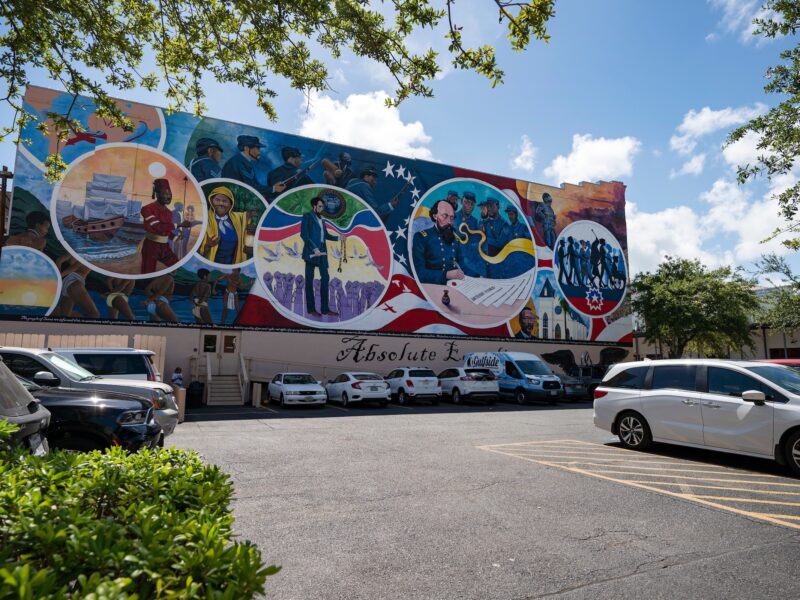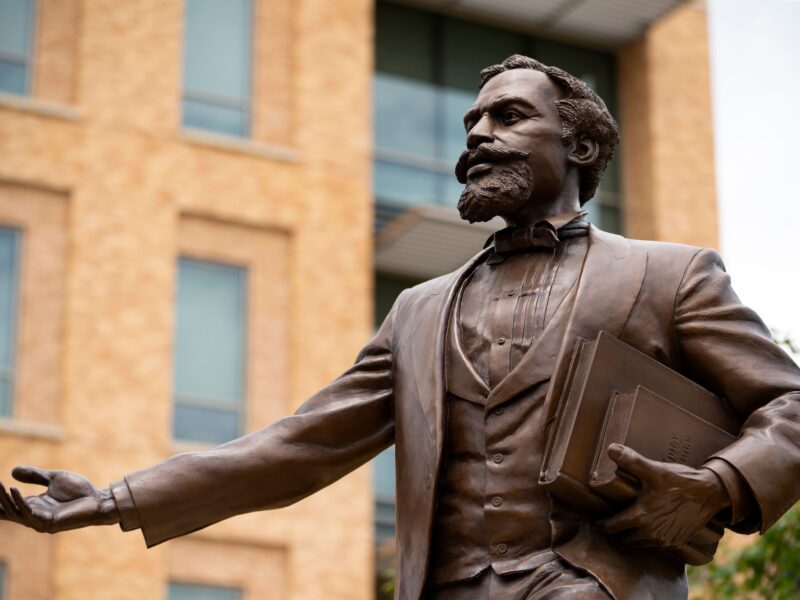Archaeologists Unearth Abandoned Townsite At Washington On The Brazos
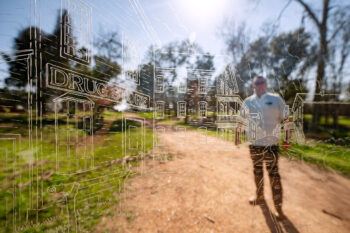
A short walk from the banks of the Brazos River in Washington County, members of a small crew dressed in sun hats and gardening gloves push buckets of mud through metal sieves, picking out nails, bits of glass and ceramic, and other traces of a log cabin that once served as Sam Houston’s presidential office.
Closer to the river, the unearthed base of a brick fireplace marks the spot where a tavern once stood, supplying travelers with food, drink and a place to rest their heads after a hard journey under the Texas sun.
“David Crockett stayed here for two nights on his way to the Alamo — a place that he never leaves,” said Jonathan Failor ’17, observing the crew’s work on a recent February afternoon. Failor serves as site manager for the Washington on the Brazos State Historic Site, where excavations over the last six months have turned up more than 10,000 artifacts from the abandoned townsite once home to more than 1,000 people.
Washington on the Brazos is remembered as the “Birthplace of Texas,” where the Texas Declaration of Independence was signed on March 2, 1836. But as Failor explains, the site has plenty of other stories to tell. It’s currently undergoing a $51 million renovation and expansion focused on presenting a more complete account of the town and its central role in early Texas history, including a stint as capital of the Republic of Texas from 1842 to 1845.
“During Sam Houston’s second term as president of the republic, he relocated the capital to this location,” said Failor, who holds a degree in Recreation, Park and Tourism Sciences from Texas A&M University. “That story, about the government center that was here, has never really been told — at least not in the way we’re planning on telling it.”
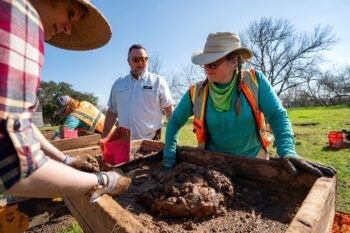
Failor said the project was made possible by a $41 million allocation from the Texas Legislature, thanks in large part to the efforts of Sen. Lois W. Kolkhorst of Brenham, as well as an additional $10 million being raised privately by the historic site’s foundation.
Scheduled for completion by mid-2025, planned additions to the site include full-size re-creations of historic buildings, such as the tavern, a drug store, and Houston’s log cabin office, which settlers originally constructed as a family home.
In addition to highlighting the town’s connection to important figures like Crockett, Houston and the republic’s final president, Anson Jones, Failor says the ambitious renovation will give guests a window into the lives of ordinary Texans who occupied the area from its establishment in the 1830s through its heyday in the 1850s.
“My passion for history is taking what I’ve learned and bringing it to life for people,” Failor said. “That’s what we do here, and it’s just such a powerful way to teach people about the past.”
Picking Up The Pieces
In many ways, Failor said, the real story of Washington on the Brazos is less about what’s still there and more about what isn’t. A key priority of the expansion will be to tell the story of how a thriving community with homes, shops and multi-story buildings ultimately became a bare expanse of pasture.
“You come out here and you think, ‘There’s no way there was a town here,’” Failor said. The settlement rapidly fell into decline after residents rejected a proposal from the Houston and Central Texas Railroad to build a line there: “(Instead) the railroad goes to Navasota and Brenham, and that’s why this town dies,” he explained.
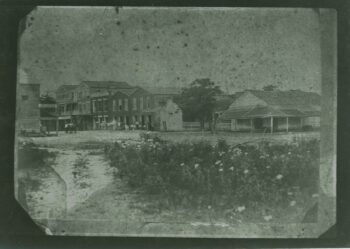
Piecing together the layout of the former town’s streets and buildings was no small feat, Failor said. Only a handful of photographs exist, and the sole original map of the settlement was lost in the Galveston Hurricane of 1900.
“We’ve essentially had to remap the town,” he said, relying on tax records and other clues to identify key locations.
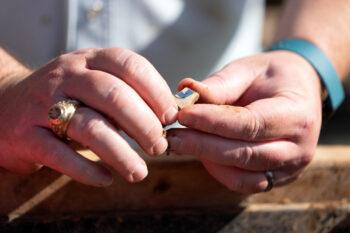
Today, etched panes of glass placed throughout the site offer a view of what the town’s streets once looked like. Standing in front of the glass, guests can see the outlines of where storefronts and other structures once stood. A series of temporary signposts mark where buildings like the War and Marine Office and blacksmith’s shop were situated.
Crews from McKinney-based archaeological firm Integrated Environmental Solutions began excavating these and other sites in September 2023, turning up a wealth of additional evidence that will guide the site’s expansion. Artifacts like nails offer hints as to what a structure may have looked like based on the techniques used to build it, Failor said, while pieces of glass and painted ceramic can be analyzed to determine their origin.
“If you get a piece big enough, we’ve been able to identify the exact pattern and exactly where it was made and when it was made,” he said, allowing the site’s staff to replicate small details like the specific type of dishes a family may have used to serve meals. “All of this will inform what we put inside these buildings.”
New Perspectives
Other big finds at the site include coins from the tavern — an 1831 U.S. dime and an 1820 Spanish silver coin with the image of King Ferdinand VII— as well as the largely intact brick floor of a structure built around the late 1830s. Failor and his team plan to re-create that building while leaving the original floor exposed for guests to see.
“From the outside it will look like a republic-era building,” he said. “But when you walk in, it will be an open floor with a catwalk so you can look at some of the archaeological ruins of the town.” Sharp-eyed visitors may even notice the indentation of a small pawprint on one of the bricks, probably left by a local cat while the clay was drying, Failor said.
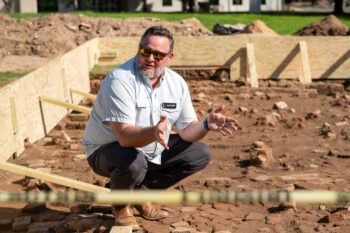
Another important structure he intends to replicate is Hatfield’s Exchange, a two-story mercantile building where the 8th and 9th Texas Congress assembled. In the summer of 1845, then-President Jones called a special session on the building’s second floor, where he presented documents for the annexation of Texas into the United States. By late December that same year, the republic was dissolved and the Lone Star State became the 28th member of the rapidly growing nation.
The exchange burned down in 1854 and the remaining foundation was slowly destroyed by farmers plowing the soil, Failor said. While few traces of the structure exist today, he said the events that took place there represent an important addition to the site’s historical identity.
“In Independence Hall, the Republic of Texas was born on March 2, 1836. Nine years later and 300 feet away, the end of the Republic of Texas began at Hatfield’s Exchange,” Failor said. “That’s an important story for us to tell, and that’s a story that can be uniquely told here in the town of Washington.”
Media contact: Jonathan Failor, jonathan.failor@thc.texas.gov
